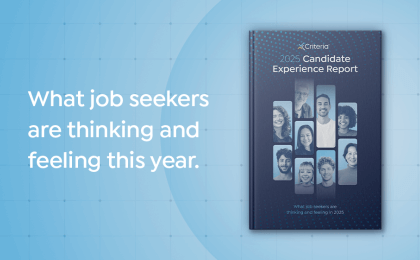One of 2020’s biggest talent trends? According to LinkedIn’s Global Talent Trends report, it’s a multigenerational workforce. A multigenerational workforce is defined as a workforce comprised of employees from different generations, which can include the “Silent” Generation (born before 1946), Boomers (born 1946 - 1964), Gen X (born 1965 - 1980), Millennials (born 1981 - 1996) and Gen Z (born 1997 or later).
Here are some of the most frequently asked questions about the multigenerational workforce:
Why is the multigenerational workforce becoming a trend now?
One main reason is that people from Generation Z―the oldest members of this group are 23―are just now entering the workforce out of high school and college. Whether they take jobs as baristas, remote IT specialists or retail associates, Gen Zers represent a new type of employee… and they’re making the workforce as we know it, well, better.
That’s right! Nearly 9 out of 10 human resources professionals reported to LinkedIn that employing a multigenerational workforce actually made their companies more successful. An article published by Forbes suggests that generational diversity is a marked advantage for modern companies, allowing them to leverage diverse ideas from people with different life experiences.
What do I need to know about Generation Z workers?
First of all, they’re not so different from your other employees. Writing them off as young and tech-obsessed (as many people did to Millennials) is probably not the best strategy. Here’s what’s really important to Gen Z workers: inspirational coworkers and company culture (a top factor to 42% of respondents) and employee training (a top factor to 36% of respondents).
While many assume that young, green Gen Zers crave working for a company with a true purpose and meaningful mission, it’s only a top priority to 18% of these youthful workers. Baby Boomers, and every other working generation, actually value that more.
Like all employees, Gen Zers want to work in a positive work environment that champions balance, pays well, and offers competitive benefits.
What are the priorities of other generations in the workforce?
Here’s the breakdown of priorities from those considering a new job, according to the LinkedIn study:
- Inspirational coworkers and culture is a top priority for 42% of Gen Z, 41% of Millennials, 43% of Gen X and 45% of Baby Boomers.
- A meaningful mission is a top factor for 18% of Gen Z, 23% of Millennials, 23% of Gen X and 32% of Baby Boomers.
- High-value employee training is a prime consideration for 36% of Gen Z, 25% of Millennials, 20% of Gen X and 21% of Baby Boomers.
What are some challenges of a multigenerational workforce?
There are definitely some intergenerational conflicts you’ll want to be on the lookout for within your organization, especially these three hot-button issues: management style, work-life balance, and communication style. According to LinkedIn, about two-thirds of people agree these topics are significant problems at work.
To address these problems, ensure your leadership is respectful toward workers from other generations, remaining open to suggestions and collaboration. Find a way to communicate. And focus on the solution, especially when ironing out disagreements about these three areas of conflict.
There are also going to be disagreements about company culture. Take care to address this problem by considering the needs of everyone, not just your most vocal or tenured employees. Remember that your goal is happy, productive employees across every generation. From office birthday celebrations to offsite volunteer programs, try to create team-building exercises that are inclusive and well-attended by all.
Don’t be surprised, either, if negative stereotyping creeps into your multigenerational workplace. To avoid imbalances that could poison both productivity and morale, try balancing teams whenever possible. A more balanced team featuring employees of all ages may communicate better and collaborate more effectively.
What are some of the best ways to successfully hire and manage a multigenerational workforce?
One of the best ways to better manage a multigenerational workforce is to understand it. And that requires good data. Once you wrap your head around the very different types of people who make up your organization, you can begin to understand how to best engage them.
You may also want to give your hiring practices a little freshening up, too. Remember that your job listings and the way you talk about your organization offer prospects insight into your company’s culture. Treat these postings like advertisements designed to appeal to the best candidates from every generation, not just the ones you usually hire.
You’ll also want to take a long, hard look at your company’s culture. A culture that makes no room for the young, the old, or the generations in between will really struggle to recruit and retain multigenerational talent. Invest in team-building activities that bring everyone together, like company potlucks or a night at a baseball game.
Finally, many companies have had success instituting a mentorship program that allows employees from different generations to connect and collaborate with each other. Keep in mind these programs don’t need to be ultra-traditional. Two employees can act as mutual mentors, both learning from one another, regardless of age, experience and background.
While a multigenerational workforce may seem like more work than a homogenous one, know that the benefits of a diverse organization are well worth the time, effort, and resources to properly support workers of all ages.





